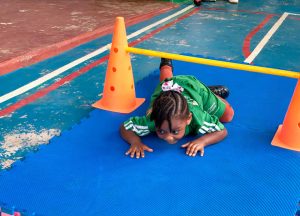Essential Tips To Enhance Students’ Well-being
The growing prevalence of mental health and well-being issues at school raises a lot of concerns among educators and parents. Before, well-being approaches were not easily recognized by teachers and parents as directly leading to improved student learning outcomes. However, research by renowned organisations such as the IBO recognizes well-being as an important influencer of student achievement.
Since well-being has many facets, improving students’ well-being in schools requires a global approach involving teachers, parents and students. But before diving into factors that contribute to students’ well-being, it’s important to know what well-being is and its main pillars. This article aims to assist academic educators and parents in promoting students’ well-being through essential tips.
1. What is well-being?
According to the Council of Europe, well-being can be defined as “the experience of health and happiness”. Simply put, well-being is the state of feeling good and functioning well in your life (International Baccalaureate Organisation, 2021).
Well-being is a broad concept that encompasses a range of psychological and physical abilities. There are five major types of well-being:
- Physical well-being – the ability to maintain a healthy body through regular exercise, a balanced diet, proper sleep, etc
- Emotional well-being – the ability to cope with one’s emotions and generate emotions that lead to good feelings
- Social well-being – the ability to create and maintain healthy, reciprocal relationships with the people around us and create one’s own emotional support network
- Societal well-being – the ability to participate in an active community or culture.
- Workplace well-being – relates to all aspects of working life, from the quality and safety of the physical environment, to how workers feel about their workability
Overall, a student’s well-being focuses on the first three abilities that are physical, emotional and social.
2. Types of well-being at school
Student wellbeing encompasses the overall health of a student, including their physical, emotional and social health.
Physical well-being
Physical wellbeing is the degree to which a student feels healthy, protected and secured. Regular exercise, preventative healthcare, diet, and physical security are all part of a student’s physical health.
How to promote physical wellbeing at school
- Help students in becoming physically active through sport
- Encouraging extracurricular activities such as Football, basketball, tennis, etc. For example, Enko Bonanjo enables students to take part in after-school clubs with activities such as talent shows, athletics, dances, etc.
- Encourage handwashing and other healthy habits
- Avoid junk food in meals
- Providing a safe atmosphere for students
How to promote physical wellbeing at home
- Commit to a healthy diet with regular meal patterns, less salt and oil, more fruits and vegetables, etc.
- Encourage children to drink a lot of water instead of sugary beverages
- Promote good sleeping habits
- Limit snacks
- Encourage children to move more, i.e. they can add walking breaks to their day.
Emotional well-being
A student’s emotional wellness entails knowing themselves and being able to face their problems. When a school fosters emotional well-being, it leads to greater academic performance and lifelong health.
How to promote emotional well-being at school?
- Ease social interactions through extracurricular activities. Activities can range from sports clubs to clubs focusing on hobbies, such as film, drama, baking or books
- Develop a strong sense of purpose and shared values among students and staff
- Provide a safe, comfortable environment that is conducive to student learning
- Emphasise an inclusive and supportive culture
- Organise tea and talk sessions to address students’ issues. For example, in April, Enko Riviera invited a psychologist to help students in examination class build their confidence and overcome stress.
How to promote emotional wellness at home?
- Nurture strong relationships between parents and children and between siblings.
- Positive self-talk and providing encouragement, praise.
- Promote mindfulness, kindness and gratitude.
- Encourage healthy eating and sleeping habits
- Teach positive values such as respect, care, etc.
Social well-being
According to Pang, students’ social well-being may be defined as “the extent to which they feel a sense of belonging and social inclusion in their academic environment”. Social well-being refers to the extent to which a student experiences positive relationships and connectedness to his classmates, family, friends and the society as a whole.
How to promote social well-being at school?
- Organise whole school events such as fairs, picnics to help students bond.
- Set up anti-bullying programmes. In this vein, Education in motion, a global education company has implemented ‘Parent Academy‘ to raise parental awareness on a range of issues from mental health considerations to peer-on-peer abuse.
- Foster prosocial behaviour, i.e. engage students in helping activities such as peer tutoring, classroom tasks, etc.
- Discuss topics such as kindness, empathy, fairness and gender equity in the classroom. At Enko Education, “schools work to ensure that all children, whatever their age, culture or gender, have the right to blossom in a safe environment”, Lea Tyburn, social impact associate.
- Show an interest in the students’ lives outside the classroom.
How to promote social well-being at home?
- Balance Screen/connectivity time. For example, you can swap family movie night for story night.
- Encourage children to engage in volunteering to give them a sense of self-worth and connect to other people.
- Foster positive relationships and behaviours, i.e. learning to agree or disagree in a positive way. Avoid complaints or worries
- Celebrate and compliment children.
3. Why is well-being important at school?
Well-being at school and academic excellence are intertwined. A happy student can easily learn, play and unlock their potential. Schools such as Enko education have made students’ well-being a priority. Léa Tyburn, Social impact associate at Enko Education states that: “Child protection is paramount to the Enko Education teams, we want children to be able to learn in a safe environment.” Therefore, schools should not only be a place to learn. It should also be a place where students’ wellbeing are prioritised. Well-being at school means:
- being engaged in academic and social activities
- feeling safe and valued
- having positive self-esteem and a sense of autonomy
- having positive and supportive relationships with teachers and peers
- feeling a sense of belonging to their classroom and school
- feeling happy and satisfied with their lives at school and at home.









